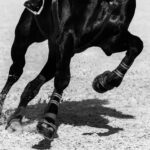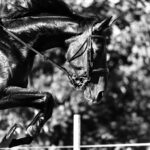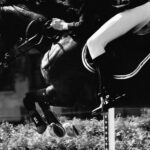Equine chiropractic typically involves a comprehensive assessment of the horse’s musculoskeletal system, focusing on the spine, joints, and muscles. A typical session may include:
- Evaluation:
The equine chiropractor assesses the horse’s posture, gait, and range of motion to identify areas of tension, stiffness, or misalignment. - Motion Palpation
By gently palpating along the spine and joints, the chiropractor can identify areas of subluxation or restricted movement. - Adjustments
Using hands-on techniques, the chiropractor performs precise adjustments to realign the spine and joints, relieving pressure on nerves and restoring proper function. - Soft tissue work
In addition to spinal adjustments, equine chiropractors may incorporate soft tissue techniques such as massage or stretching to release tension in muscles and improve flexibility. - Education and recommendations
Equine chiropractors often provide guidance on exercises, stretches, and lifestyle modifications to support the horse’s ongoing well-being and prevent future issues.
Overall, equine chiropractic aims to promote optimal musculoskeletal health, enhance performance, and prevent injuries by restoring balance and mobility to the horse’s body. It’s a holistic approach that considers the interconnectedness of the body and strives to address underlying imbalances for long-term wellness, performance & preventive care.
Each chiropractic session will be tailored to meet the unique needs of each horse. Equine chiropractic care is not just reserved for elite athletes; it benefits horses of all ages, disciplines, and activity levels. Whether your equine companion is a competitive jumper, a beloved trail horse, or a cherished companion, regular chiropractic maintenance can help ensure their continued health, happiness, and performance.



